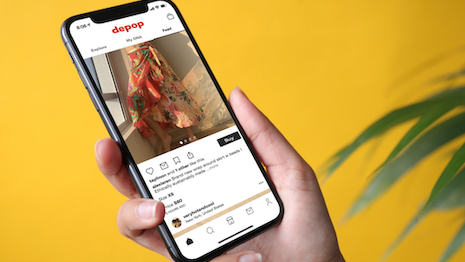
Brands Cannot Overlook Costly Mistake of Slow Site Speed
As consumers double down on eCommerce, luxury brands and retailers must be cognizant of site speed as a critical factor in converting a sale.
According to new findings from cloud platform and optimization services company Yottaa, has released new data after measuring the experience and conversion impact of site speed across an array of eCommerce sites. Its Site Speed Standard benchmark indicates that an expeditious website experience can pay off for brands.
“The need for speed is arguably one of the most surprising finds from this data,” said Rick Kenney, managing director of Leading Lights, an eCommerce consulting company which built the benchmark. “eCommerce site speed is often discussed, but rarely actioned, to see that just one second improvement in page load time has such a dramatic impact, 5.7 percent conversion lift on mobile, is the clear call to action for brands and retailers.”
Yottaa measured the experience and conversion impact of site speed on eCommerce sites, analyzing the shopping activity of more than 25 billion page views across 200 leading retailers.
Time is money
Every online session a consumer engages in will lead to a specific outcome: the shopper will either buy, browse or bounce. This is why it is critical for brands to provide quick and digestible online experiences, since asking for too much of a consumer’s time can lead to missed purchase opportunities.
The Site Speed Standard found that eCommerce sessions that took shorter than four seconds to load pages captured 59 percent of conversions, while sessions that took longer than four seconds led to 58 percent of bounces.
Optimized sites are a necessity for online shoppers. Image credit: Rebag
In their eCommerce journeys, shoppers will spend the most time with two types of pages: the product detail page and the category page. The experiences on these pages heavily influence whether shoppers will add a product to their cart.
On average, shoppers spent 37 percent and 32.6 percent of their shopper journey on category and product detail pages, respectively, while using desktop computers. When using mobile devices, shoppers spent 35.5 percent and 32.9 percent of their shopper journey on product detail and category pages, respectively.
Website optimization – the process of using tools, strategies and experimentation to improve a website’s performance, traffic and conversion rates – is crucial.
Sites that are filled with resources do take the longest to load, but when optimized, these resource-saturated pages can actually load faster than unoptimized sites with fewer resources. Brands can combine useful third-party features and fast side speed to create heavily optimized pages that provide better shopper experiences and higher conversion rates.
The average buyer journey takes 70.2 seconds, and eCommerce sites that optimize page load times are 21 percent faster than non-optimized sites and cut 15 seconds off the shopper journey, also leading to higher conversions.
The data also suggests that faster pages yield greater engagement. When product detail pages are optimized, they load faster – saving two seconds of page load time on desktop and 1.8 seconds on mobile, cutting time by 34 and 32 percent, respectively.
Mobile shoppers spend about a third of their shopper journey on product detail and category pages. Image credit: Depop
“While brands must embrace third-party features that provide more engaging shopper experiences, they also need to be able to optimally sequence and control how these technologies load, so they do not impact site speed,” Mr. Kenney said. “This can be done through an automated optimization solution such as Yottaa, and brands can also optimize the loading of other digital elements, such as high-resolution images, custom JavaScript, and custom font, to improve page load speed.”
What is crucial will remain
Required time spent and optimization of brands’ online pages have long been linked to a customer’s likeliness to buy. More luxury retailers are redesigning their eCommerce platforms to better meet shoppers’ needs.
Last fall, U.S. department store chain Saks Fifth Avenue unveiled a new and improved site. It was the first comprehensive website replatforming and redesign from Saks in the last five years.
Using Salesforce Commerce Cloud, saks.com now emphasizes fashion, convenience and personalization while ensuring flexibility for future enhancements. The new Saks.com also provides tailored product recommendations and curated content, including segmented homepage tabs and navigation for women and men (see story).
British department store Fortnum & Mason also debuted a new website last year, with the redesign emphasizing its commitment to service and convenience.
New features include expanded payment options, improved order management and wish lists. Shoppers with an account on the Fortnum & Mason website can more easily manage their orders, including tracking and returning purchases (see story).
“The product details page (PDP) is the MVP – most valuable page,” Mr. Kenney said. “Across the buyer’s journey, a shopper views nearly five product detail pages on mobile.
“More importantly, it is the cart-or-not moment, when the brand must inspire and instill confidence,” he said. “The need for shopping tools on the PDP that cover the art and science of shopping is paramount, and in fashion, that means curating user-generated content that inspires, and fit technology to instill confidence.”


